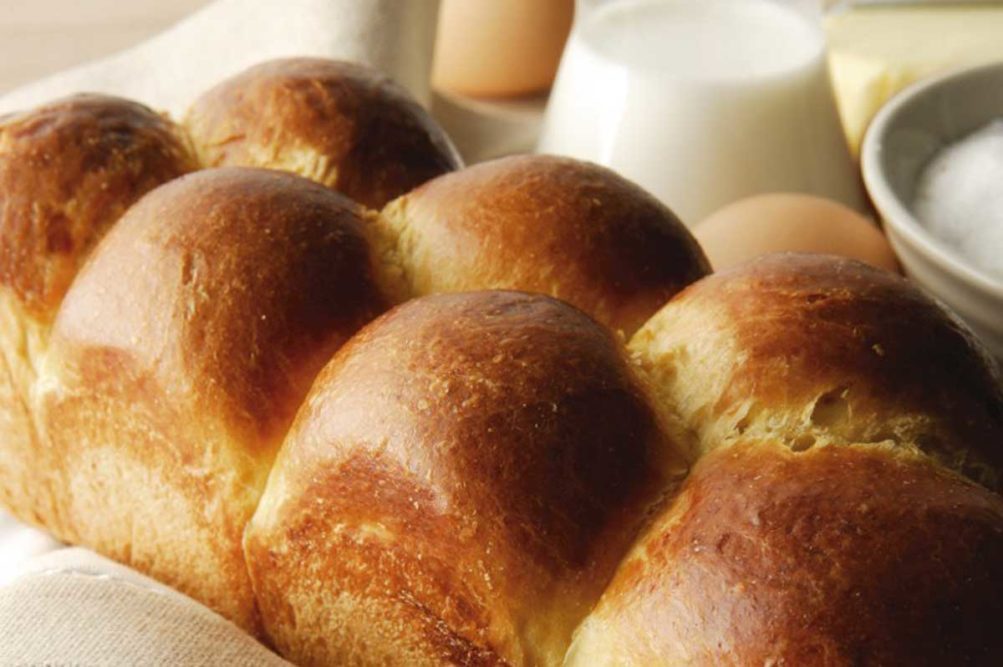Replacing sodium-containing ingredients in a chemical leavening system can be a road to reducing sodium in a bakery product. But without a clear understanding of the sodium-containing system’s dough rate of reaction (DRR) or neutralizing values, the way forward can be unclear. If bakers stumble ahead anyway, they risk losing their way with their finished product.
“When formulators go outside of the traditional sodium-containing leavening agents, bakers may notice a loss in overall leavening functions, quality of taste in their final product and their costs may increase as they may need to incorporate other ingredients into their recipe,” Dr. Yin said.
By adding protein alternatives, for example, bakers can use those ingredients’ emulsifying capabilities to stabilize the air and water in doughs and batters.
“This stabilized system would allow foaming, expansion and settling to create the cell structure needed in a finished product, similar to the results from a chemical leavening system,” explained said Yanling Yin, PhD, director of RD&A, ingredient solutions, Corbion.
A lack of understanding of the DRR of the original formulation or a new one will result in a finished product that doesn’t rise properly. Even texture can be impacted by this. An unbalanced leavening system creates an unbalanced pH, which will have a flavor impact. Leftover bicarbonate will not only contribute a soapy flavor but also a darker color and coarser texture. Too much acid in the final product, and consumers will experience a sour or tart flavor.
And while ammonium bicarbonate will definitely take a cut out of the sodium content, it needs to be used in appropriate applications.
“When using ammonium bicarbonate as a leavening base, it is recommended to use it in low-moisture baked products like crackers, cookies or extruded snacks to prevent any off flavors,” said Mary Thomas, senior R&D manager, Lesaffre.
Water in the formulation can capture ammonia gas — and its taste and odor — in the finished product.
Ms. Thomas also noted that baking powder biscuits and applications that rely on salty or savory flavor profiles might also be difficult to reformulate for a sodium-free chemical leavening agent, simply for the impact on flavor.
Some flavor changes may surprise and actually be welcome.
“For example, we have found with the elimination of all sodium content in the chemical leavening solution used in a blueberry muffin, traditionally mild fruit flavors are actually enhanced in the finished baked product,” said Paul Bright, senior innovation manager and product category manager for chemical leavening, AB Mauri North America.
[Related reading: Sodium reduction option vary by bakery application]
One aspect of sodium-containing leavening agents that is difficult to replicate, however, is cost. These ingredients are not only easy to use, but they are also very affordable. Non-sodium ingredients not only require reformulating but also are more expensive.
“The manufacturing process for potassium bicarbonate is more complex than that for sodium bicarbonate which leads to a price differential between the two materials,” explained Robert Berube, technical services manager, Church & Dwight.
A common strategy to offset the cost of more expensive bicarbonates is to replace only part of the sodium bicarbonate. Nita Livvix, R&D manager, Clabber Girl, reminded, however, that when using a combination of these ingredients, bakers must keep in mind that the molecular difference results in 19% less carbon dioxide gas released from potassium chloride.
The quantity necessary in the formulation can also drive up the cost of the formulation. While trying to match neutralizing values to avoid any off-flavors, bakers will often need to use more of the sodium-free ingredients, increasing the cost even more.
“Using a small amount of an acid with a high neutralizing value, such as fumaric acid, can help to offset this,” Ms. Livvix explained. “The formulator still must be mindful of gas release requirements, whether in the batter or the oven, when determining the best options.”
With the right understanding of the current chemical leavening reaction and the finished product in mind, formulators can replace sodium in chemically leavened baked goods with minimal to no impact on taste, texture and volume. With a clear way forward, any application can become a part of the solution to the sodium challenge.
This article is an excerpt from the March 2021 issue of Baking & Snack. To read the entire feature on chemical leavening, click here.






